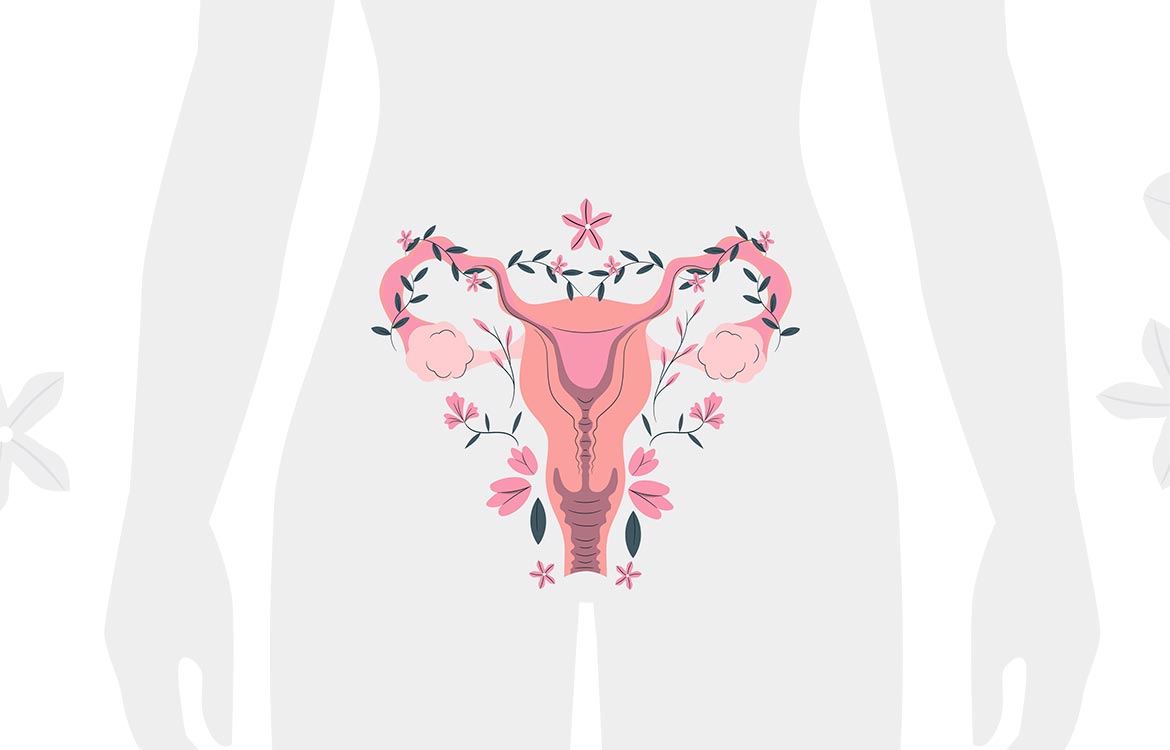The menstrual cycle is a series of cyclical changes that occur in the reproductive organs of a woman.
The menstrual cycle includes the follicular phase (follicle maturation), the ovulatory phase (ovulation), the luteal phase (corpus luteum), and menstruation.
Menstruation is the most noticeable manifestation of these changes in the woman’s body. Therefore, the duration of the menstrual cycle is determined from the first day of the last menstruation to the first day of the next one.
What are the characteristics of a normal menstrual cycle?
- The duration of a normal menstrual cycle is between 21 and 36 days with variations of up to 2 days from cycle to cycle.
- Overall well-being is not affected, and productivity is maintained.
- The average blood loss per menstrual cycle is 30-80 ml, with up to 2/3 of the total blood loss occurring in the first 2 days of menstruation.
- The duration of menstruation is 3-7 days.
As a rule, the menstrual cycle should be regular. Changes in its duration (e.g., 28 days, 32 days, 27 days, 35 days) are observed in young girls during the first few years after the onset of menstruation, in women during the premenopausal period, in night shift female workers, and in women traveling long distances with changes in time zones.
At what age does the first menstruation occur?
The first menstruation (menarche) usually occurs between the ages of 12 and 14. If menstruation has not started by the age of 16, it is advisable to consult a doctor.
What changes occur in the follicular phase of the cycle?
The follicular phase begins on the first day of the menstrual cycle. In the ovaries, under the influence of follicle-stimulating hormone (FSH), several follicles start to grow. By approximately the 8th day, one dominant follicle is selected, which grows faster than the others and reaches a size of 18-25 mm by the time of ovulation.
The luteinizing hormone (LH) gradually increases, reaching its maximum level 1.5-2 days before ovulation
What is ovulation?
Ovulation is the rupture of the follicle wall and the release of an egg ready for fertilization into the abdominal cavity. In a 28-day menstrual cycle, ovulation usually occurs around the 14th day. Before ovulation, there is an increase in androgens, which explains the heightened sexual desire during this period.
How does ovulation manifest?
Sometimes, immediately after ovulation, there may be a transient pain in the lower abdomen on the left or right side, which quickly disappears.
The nature of vaginal discharge also changes. In the first phase of the cycle, they are mucous and transparent, especially during ovulation, resembling stretchy mucus. This indicates sufficient estrogen saturation in the body. In the second phase of the menstrual cycle, the discharge becomes thicker, whitish, and opaque.
What changes occur in the luteal phase of the cycle?
The luteal phase of the menstrual cycle begins immediately after ovulation and ends with the onset of menstruation. The dominant follicle transforms into the corpus luteum, which produces the hormone progesterone. Progesterone prepares the uterine endometrium for fertilization and ensures the normal development of an embryo. If pregnancy does not occur, the corpus luteum gradually decreases in size, hormone production decreases, and the functional layer of the endometrium is shed, leading to menstruation.
Disruption of the menstrual cycle is a pathological symptom of most reproductive organ disorders in women, including those that occur without other noticeable clinical signs. Problems can also arise as a result of natural causes, such as overexertion, heavy physical exertion, stress, sudden changes in diet, or climate.
The regularity and duration of menstruation are regulated by the functioning of the endocrine system, so disruptions often occur due to hormonal imbalances. Cycle problems can be caused by pathologies of the brain, endocrine organs, uterus, ovaries, and tumor processes.
In women over 40, changes in the regularity of menstruation can be caused by early onset of menopause. In girls, the menstrual cycle stabilizes about two years after menarche. Cycle instability can be caused by natural reasons as the girl's body is still developing, as well as by contributing factors such as stress, improper nutrition, increased physical and mental stress.
Symptoms of menstrual cycle disruption:
The normal duration of the cycle in women is between 21 and 35 days. Menstrual bleeding lasts from 3 to 7 days. During menstruation, a woman loses up to 150 grams of blood. The following symptoms can be attributed to pathological manifestations:
- Cycle duration of less than 20 or more than 35 days.
- Delay in menstruation of more than 10 days, not related to pregnancy.
- Absence of menstruation for more than six months in women of fertile age
- Short menstruation (1-2 days)
- Rare menstruation (occurring with intervals of up to 3 months)
- Excessively heavy menstrual bleeding.
- Prolonged bleeding lasting 10-14 days.
- Appearance of intermenstrual bleeding.
- Painful menstruation.
- Unstable cycle.
- Most women with infertility have problems with the menstrual cycle.
The dangers of menstrual cycle disruptions
The disruptions of the menstrual cycle are symptoms that indicate underlying issues in the body, such as disorders of internal organs (such as uterine fibroids, endometriosis, ovarian tumors, etc.) and hormonal imbalances. Additionally, menstrual cycle disruptions can lead to infertility. It is crucial to pay attention to the body's signals as most gynecological disorders can be successfully treated when promptly addressed by a doctor.
